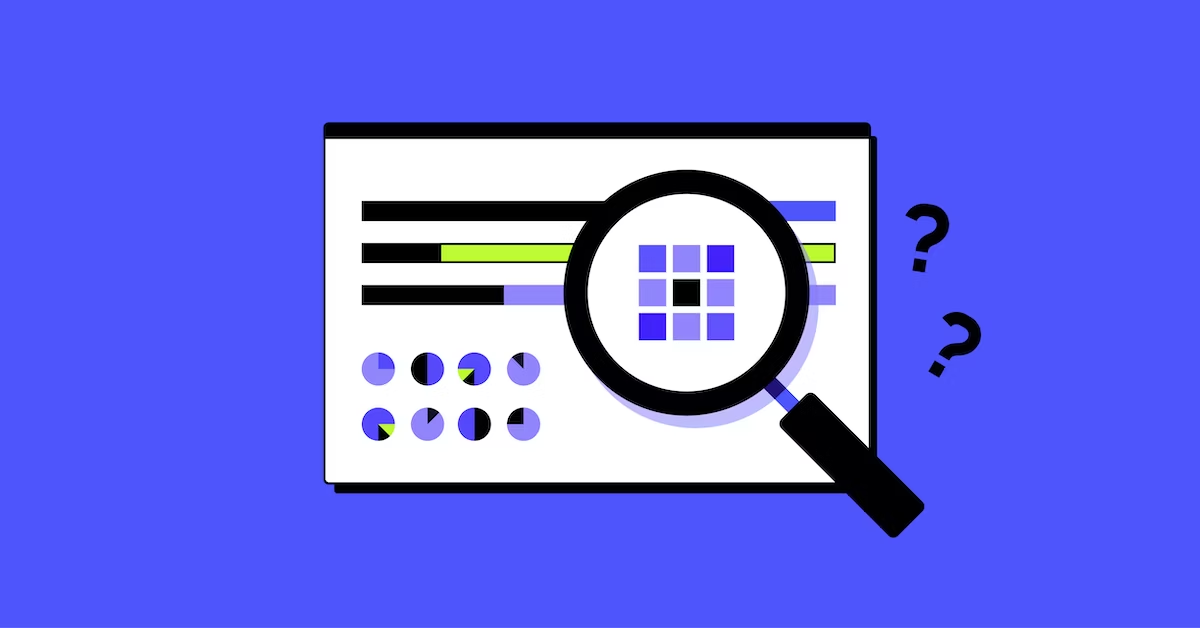The term “data reliability” encompasses the dependability and uniformity of a dataset, gauging its ability to yield consistent results under identical conditions over an extended period. This concept holds paramount importance as organizations increasingly lean on data for strategic decision-making and operational efficiency.
At the core of informed decision-making lies reliable data. In the contemporary business landscape, organizations heavily rely on data to shape strategies, allocate resources, and fuel growth.
However, the quality of data is contingent upon its source. Intentional or negligent practices can compromise data integrity, exposing businesses to precarious or unethical decision-making.
This article delves into the critical factors influencing data reliability and presents best practices to uphold accuracy throughout the data lifecycle.
9 Factors That Influence Data Reliability
Nine crucial factors impact data reliability in any decision-making process. These factors are:
- Data Source
- Comprehensive Coverage
- Data Collection Methods
- Data Integrity
- Time Sensitivity
- Consistency and Repeatability
- Data Cleaning and Preprocessing
- Standardized Metrics
- Error Management
Let’s delve into each of these points for a detailed understanding.
1. Credible data source
A dependable dataset typically stems from a reputable and verified source known for producing accurate information. Credibility is often established through peer reviews, expert validations, or adherence to industry standards.
Information sourced from government agencies, academic institutions, or reputable private organizations is generally deemed more reliable. Verify credibility by cross-referencing information or employing triangulation methods. The credibility of a source significantly enhances the likelihood of a dataset being reliable.
The quality of the data source is pivotal for reliability; choose sources with a proven track record in credibility and accuracy. Poorly chosen sources may introduce errors or biases. Ensure the source’s data is well-maintained and secure to preserve data integrity. Validate the methodology employed by the source for data collection.
2. Comprehensive Coverage
A reliable dataset should thoroughly encompass the scope and dimensions of the phenomenon under study. This inclusivity minimizes biases and guarantees the incorporation of all key variables.
It is essential for the dataset to be sufficiently large, ensuring statistical significance and enhancing the generalizability of findings. Small or selective datasets run the risk of introducing biases that compromise reliability.
3. Data Collection Methods
The reliability of data is directly influenced by the methods employed for data collection. Vigilance is necessary to avoid sampling biases, particularly in surveys or observational studies.
Regular calibration of tools and instruments is crucial for maintaining accuracy. Poorly designed collection methods can taint even the most robust data sources, emphasizing the importance of opting for rigorously tested methods.
4. Data Integrity
Data integrity, encompassing accuracy and consistency throughout its lifecycle, is upheld through robust security measures, regular audits, and checksum validations.
Ensuring data integrity is vital, as any compromise significantly impacts reliability. Techniques like cryptographic hashing or digital fingerprinting are employed to maintain integrity.
5. Time Sensitivity
The temporal component of data influences its reliability, with outdated data potentially becoming irrelevant for current decision-making. Consideration of timestamp and the data’s shelf life is crucial, especially for cases with seasonal fluctuations. Time sensitivity plays a pivotal role in assessing data relevance for specific use cases.
6. Consistency and Repeatability:
Within a dependable dataset, conducting similar measurements under comparable conditions should yield consistent outcomes. Statistical methods such as test-retest reliability or intra-class correlation serve to verify this consistency.
Repeated measurements must consistently fall within a narrow, acceptable range of variance. Inconsistencies among data points pose a significant risk of distorting findings and conclusions. Frequent disparities across observations serve as red flags, indicating potential unreliability.
Ensuring consistency in data collection methods is particularly vital for longitudinal studies and time-series analysis. The establishment of Standard Operating Procedures (SOPs) for data collection is imperative to guarantee uniformity. Staff engaged in data collection should undergo training to adhere to these established standards. Consistency not only renders your data repeatable but also enhances its overall reliability.
7. Data Cleaning and Preprocessing
Reliable data necessitates proper cleaning and preprocessing to address inconsistencies or missing data.
Treatment of inconsistent or missing data through removal or interpolation is crucial. Normalizing data from different sources to a common scale, investing in quality assurance steps like data validation and outlier detection, ensures the dataset’s reliability.
8. Standardized Metrics
A reliable dataset adopts standardized units of measurement, terminologies, and data formats, ensuring comparability across different times, settings, or observers.
Adherence to industry standards or scientific norms enhances reliability, preventing interpretational errors or inconsistencies introduced by non-standard metrics.
9. Error Management
A reliable dataset documents error margins and uncertainty levels, employing strategies to detect, correct, or eliminate errors and outliers during data collection and processing.
Recognizing and accounting for errors increases reliability. Tools like anomaly detection algorithms automate error management, while documentation of errors and corrective actions improves transparency and trust. Understanding and addressing these factors will significantly enhance data reliability, establishing a solid foundation for decision-making and analysis.
Data reliability is an ongoing commitment, requiring careful planning, rigorous methods, and vigilant oversight to ensure a dataset stands up to scrutiny and serves as a reliable foundation for decision-making.
11 Easy Steps to Ensure Validity and Reliability of Your Data
Data validity and reliability serve as foundational elements for well-informed decision-making, transcending mere buzzwords to become pivotal criteria that profoundly impact the quality of analysis and subsequent actions.
- Establish a robust data governance framework
- Implement data governance policies
- Data auditing
- Use validated data collection instruments
- Adopt robust data collection techniques
- Enhance data storage and security
- Apply statistical tests for reliability
- Leverage automation for quality control
- Continuous training and skill enhancement
- Continuous monitoring
- Establish feedback mechanisms
Step 1: Establish a robust data governance framework
- Creating a robust data governance framework involves establishing guidelines and protocols for effective data management. This framework standardizes procedures for data collection, storage, and access, ensuring consistency across the organization.
- By adopting a comprehensive data governance framework, you can uphold data lineage, enabling traceability of how data is manipulated over time.
- Implementation of rigorous data governance policies is crucial for ensuring data security, maintaining quality, and, consequently, enhancing reliability. Additionally, this framework facilitates monitoring compliance with regulatory standards such as GDPR or HIPAA.
Step 2: Implement data governance policies
- Data governance lays down the rules and protocols that govern data management and utilization. Well-defined and articulate policies are crucial in standardizing methods for data collection, storage, and retrieval.
- Ensuring compliance with legal regulations and ethical standards, data governance significantly enhances reliability. Regularly revisiting and updating these policies is essential to adapt to technological advancements and respond to regulatory changes.
- A robust governance framework forms the bedrock of data reliability, fostering confidence among stakeholders in the integrity of the dataset.
Step 3: Data auditing
- Conduct routine audits to evaluate the quality and reliability of the data. These audits scrutinize the data’s source, the methods employed for its collection, and the alterations or utilization it has undergone over time.
- Utilize tools such as checksums and data fingerprinting to verify that the data remains untampered with.
- Audits frequently reveal vulnerabilities in the data pipeline, allowing for targeted improvements. Ensure that data audit reports are easily accessible to decision-makers and stakeholders.
Step 4: Use validated data collection instruments
- Utilizing validated instruments such as meticulously designed surveys, calibrated sensors, or reputable software is essential for ensuring data validity. These validated tools undergo rigorous testing for accuracy, delivering results that are not only repeatable but also representative.
- Public availability of reliability and validity coefficients for these instruments is imperative. Regularly updating and recalibrating these tools is essential to uphold their established standards.
- Before fully integrating new tools into your data collection process, it is advisable to conduct pilot tests to assess their effectiveness.
Step 5: Adopt robust data collection techniques
- The path to reliability commences with data collection. Embracing established methodologies like stratified sampling or randomized controlled trials contributes to enhancing the reliability of collected data.
- Precision in measurement instruments through calibration is crucial for accuracy, further fortifying reliability. Conducting a pilot phase to test collection methods serves to identify potential errors or biases early in the process.
- To ensure both validity and reliability, cross-referencing the collected data with other trustworthy sources is a prudent practice.
Step 6: Enhance data storage and security
- The compromise of data through corruption or unauthorized alterations poses a significant threat to reliability. It is essential to invest in secure and redundant storage solutions that provide real-time backups to mitigate such risks.
- Enhancing data security through encryption and multi-factor authentication is crucial in safeguarding against unauthorized access. Regular security audits play a key role in identifying vulnerabilities and preventing potential data breaches.
Step 7: Apply statistical tests for reliability
- Utilize statistical techniques such as Cronbach’s alpha, Test-Retest, or Inter-rater Reliability to quantitatively evaluate the reliability of your data. The selection of statistical tests should align with the type of data and the underlying research design.
- The outcomes furnish a measurable metric that can be monitored over time to gauge improvements or deteriorations. Incorporating these tests adds an empirical layer of credibility to your data.
- Conduct these tests at regular intervals, particularly following any significant changes in data collection methods.
- A dataset that is securely managed inherently possesses higher reliability, as it acts as a safeguard against tampering and corruption.
Step 8: Leverage automation for quality control
- Employing automation can markedly elevate the consistency and accuracy of data handling.
- Automated scripts are adept at cleaning and preprocessing data, effectively eliminating manual errors.
- Automation facilitates real-time data integrity checks, promptly flagging any discrepancies.
- By diminishing the risk of human errors and biases, automation serves to enhance overall reliability.
- Furthermore, automation enables scalability, ensuring the dataset’s reliability even across extensive volumes of data.
Step 9: Continuous training and skill enhancement
- Recognizing the indispensable role of the human element in data management is crucial.
- Implement regular training programs to keep the staff abreast of evolving best practices and emerging technologies.
- Training initiatives cultivate awareness regarding the significance of data reliability and effective methods to uphold it.
- Skill development contributes to more proficient data handling, thereby enhancing overall reliability.
- A workforce equipped with continuous training is a pivotal asset in the pursuit of data reliability.
Step 10: Continuous monitoring
- Establish real-time monitoring systems to detect anomalies or inconsistencies in data, automatically flagging these issues for prompt investigation.
- Integrate feedback from these monitoring systems into the data governance policies, ensuring immediate corrective actions based on the provided feedback to substantially enhance data validity and reliability.
Step 11: Establish feedback mechanisms
- Establish feedback loops involving end-users, data scientists, and other stakeholders to garner valuable insights into data quality. Utilize real-time feedback mechanisms to prompt immediate corrective actions.
- Conduct periodic reviews with subject matter experts to pinpoint domain-specific issues impacting reliability. Feedback plays a pivotal role in adapting and refining data processes over time.
- An agile approach to feedback and adaptation is instrumental in maintaining elevated levels of data reliability.
Enhancing data reliability is a continuous effort that necessitates a comprehensive strategy. Ensuring both validity and reliability is an ongoing and iterative process, rather than a one-time endeavor. This entails adopting a multidisciplinary approach that combines governance policies, technological tools, and statistical methods. The integration of these elements strengthens the credibility and quality of your data.
Data reliability is not a fixed attribute but a dynamic quality that can be elevated. Organizations aspiring to enhance their data-driven decision-making capabilities must prioritize initiatives aimed at reinforcing the reliability of their datasets. This heightened reliability, in turn, empowers your organization to make decisions with increased accuracy and confidence.
Summing up
In conclusion, while data serves as the driving force behind organizational success, low-quality data can impede progress. Therefore, making reliability a business-critical priority necessitates the implementation of robust protocols. This involves a comprehensive approach encompassing governance, collection, storage, auditing, automation, training, and stakeholder engagement.
Leadership plays a pivotal role in championing the adoption of best practices to uphold data validity. Continuous improvements are facilitated through statistical testing and ongoing monitoring. Armed with reliable data as their guide, teams can confidently navigate complexity, supported by credible insights.




